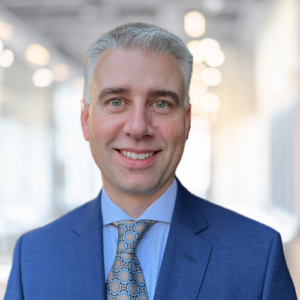Staying in the workforce for five more years makes all kinds of financial sense for Olivia
In B.C., a woman we’ll call Olivia, 65, works as a management consultant. She brings home $6,575 per month after tax. She has a $1.35 million house with a $220,000 mortgage, $492,000 in her RRSP and a plan: stay in the house as long as possible to entertain her children and grandchildren and move gently from her work to retirement in about five years.
“I intend to keep working full time for five more years to 70 and then transition to part-time,” she explains. “I might create a small suite in my basement. If I do $3,000 in renovations, I could take in $1,000 per month.”
Family Finance asked Eliott Einarson, a financial planner who heads the Winnipeg office of Ottawa-based Exponent Investment Management Inc., to work with Olivia. He explains that Olivia expects to start her Canada Pension Plan benefits at 65 at $14,445 per year. She intends to defer start of Old Age Security to age 70 when she will get a boost of 36 per cent of the base amount, $7,384 per year, to $10,042 per year at 2021 rates.
Retirement income
Even though Olivia has already reached the traditional retirement age of 65, her plan to keep working means she can still take advantage of the tax benefits of saving in an RRSP. If she adds her CPP payments to the $4,800 she is currently contributing, her new annual contribution would jump to $19,245. Over the five years to her age 70, her present balance of $492,000 growing at three per cent over the rate of inflation would rise to $675,600. That capital could generate $37,670 per year for the following 25 years to exhaustion of all income and capital.
At her top marginal tax rate, the $19,245 RRSP contribution would generate an annual refund of $6,394. If Olivia were to add $2,928 of that refund to the $25,200 she is already using to pay off her $220,000 mortgage and $10,000 line of credit, she could eliminate those debts in five years, Einarson estimates, provided she is able to roll the mortgage over at today’s lower interest rates when it matures.
She could us the remaining $3,466 from the refund to start a TFSA account — she has none now. If she continues to make that level of annual contribution for five years, the account would reach $18,954. It would then be able to pay an annuitized monthly return for the following 20 years of $100.
Adding up her retirement income at the age of 70 when she will be debt-free, she would have $14,445 Canada Pension Plan benefits, an enlarged Old Age Security benefit of $10,042 and $37,670 from her RRSP. That’s a total of $62,157 and after average tax of 14 per cent, she would have $4,455 per month to spend. The $100 from her TFSA would bring her retirement income to $4,555 per month.
That’s more than the $2,735 she spends now on basics. If those expenses do not change, she would have as much as $1,923 more per month for travel, home maintenance or gifts for her children and grandchildren, Einarson estimates. She could defer her property taxes via a B.C. program for seniors that charges nominal sums for what is essentially a loan, backed by a lien on the property and repayable when the property is sold. That would save her almost all the $2,880 annual property tax she pays. With that saving, renting out a basement apartment would not be necessary to maintain her income target, he adds.
Asset management
The fundamental question about Olivia’s investment portfolio is how efficient it will be from the perspective of risk and management cost. The risk equation is controllable by balancing her portfolio between growth and income stocks and senior bonds. One can point out that retirees should aim for stocks that provide income rather than just growth. Bonds should be government and investment grade issues bought for total return rather than just interest. Those criteria suggest a 70/30 or even 80/20 stock-to-bond ratio with a combined average return of about three per cent, as we have assumed.
Olivia, however, worries about rising costs and low returns on her registered investments. Her accounts show average annual returns on two RRSP portfolios of 3.55 per cent and 3.01 per cent. These numbers do not take into account inflation, which effectively reduces her returns to about zero. Nor do they illuminate the toll management fees take. Assuming that she pays fees averaging 2.6 per cent just on mutual funds that add up to $142,000, her management cost is $3,692 per year.
Olivia’s total invested financial assets, $492,000, put her in a position to hire an investment manager for fees well below the 2.6 per cent average charged by mutual funds. She could have the liquidity she needs, tax planning for when she is 71 and has to convert her RRSP to a Registered Retirement Income Fund and perhaps even better returns along the way. Those fee savings could go straight into her TFSA.
A custom portfolio would be structured and traded for her needs rather than the needs of others. As well, a restructuring of her investments and her tax rate, which will rise when she starts taking Canada Pension Plan and Old Age Security benefits, would be valuable.
Shopping for custom management would be worthwhile, Einarson says.
There are two final matters Olivia should consider.
First is the problem of care, should she need it. At her age, long-term-care insurance policies are costly and constrained in terms of their payouts. She could discuss arrangements for care and how it will be financed with her family as a form of pre-testamentary transfer of wealth, Einarson suggests.
Finally, Olivia also needs to consider what will happen when she passes away, for she has no spouse to whom she could transfer assets. Her capital is substantial and death will be a costly event if her registered investments still contain significant taxable sums.
Those scenarios should be years away. Olivia is healthy and employed, and her income before tax, $90,000 per year, gives her many investment and lifestyle choices. She is headed to a solid retirement.
Retirement stars: Three *** out of five






